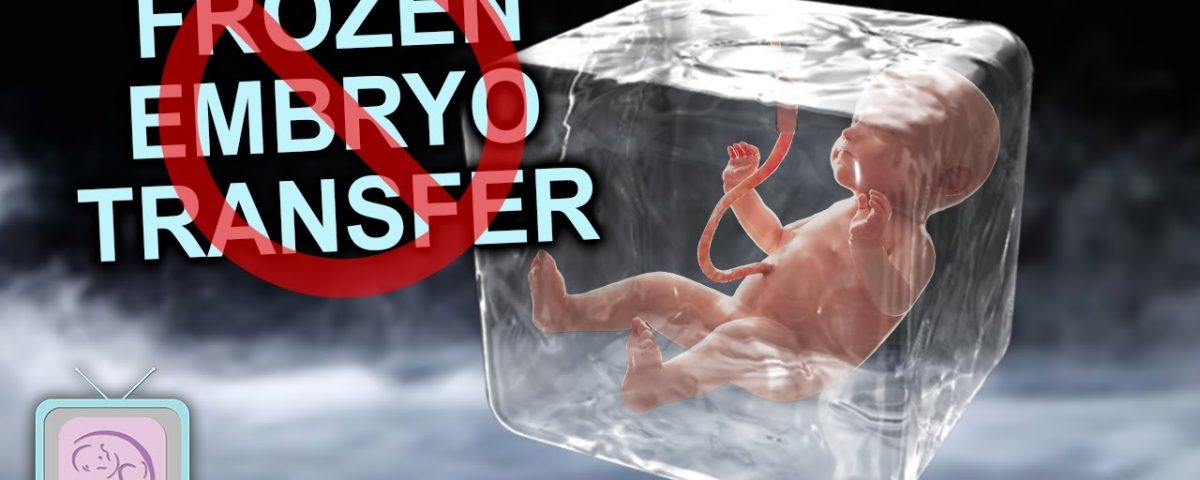
Does TRICARE Cover IVF? Your Ultimate Guide to Fertility Benefits for Military Families
April 28, 2025Frozen Embryo Transfer (FET) IVF: Your Ultimate Guide to a Hidden Gem in Fertility
Hey there! If you’re reading this, chances are you’re curious about Frozen Embryo Transfer (FET) IVF—or maybe you’re already on this journey and want to dig deeper. Either way, you’re in the right place! FET IVF is like the unsung hero of fertility treatments. It’s not as flashy as fresh embryo transfers, but it’s packed with surprises, benefits, and little-known quirks that could make all the difference for you. In this blog, we’ll peel back the layers of FET IVF, share some insider secrets, and give you practical tips to feel more in control. Let’s dive into this fascinating world together!

What Is FET IVF, Anyway?
So, what’s the deal with FET IVF? In simple terms, it’s a fertility treatment where embryos created during an earlier IVF cycle are frozen, stored, and then thawed later to be transferred into the uterus. Unlike fresh embryo transfers, where the embryos go straight from the lab to your body, FET gives you a breather—it’s like hitting the pause button on your fertility journey.
Picture this: during a regular IVF cycle, your eggs are retrieved, mixed with sperm in a lab, and turned into embryos. But instead of transferring them right away, the embryologist freezes them using a super-cool (pun intended!) process called vitrification. Months—or even years—later, when you’re ready, those embryos are thawed and placed in your uterus. It’s like having a backup plan in your pocket!
Why Freeze Embryos?
You might be wondering, Why not just use them fresh? Great question! Freezing embryos isn’t just a random choice—it’s a strategy. Here’s why people go for FET:
- Timing is everything: Your body might need a break after the egg retrieval process, which can be tough with all those hormones. FET lets you wait until your uterus is in tip-top shape.
- Extra embryos: If your IVF cycle produces more embryos than you can use at once, freezing them means you don’t have to start from scratch next time.
- Genetic testing: Some folks use FET with preimplantation genetic testing (PGT) to check embryos for issues before transfer—more on that later!
- Life happens: Maybe you’re not ready for a baby right now, or you’re facing a health challenge. FET lets you plan for the future.
Fun fact: Over 400,000 frozen embryos are stored in the U.S. alone, waiting for their big moment. That’s a lot of tiny possibilities on ice!
FET IVF vs. Fresh Embryo Transfer: What’s the Difference?
Let’s break it down—FET IVF and fresh embryo transfer (ET) are like two siblings in the IVF family. They share the same goal (a baby!), but they take different paths. Here’s how they stack up:
| Feature | Fresh Embryo Transfer | Frozen Embryo Transfer (FET) |
|---|---|---|
| Timing | Embryos transferred 3-5 days after retrieval | Embryos frozen, thawed, and transferred later |
| Hormone Levels | High from egg retrieval meds | Controlled with prep meds |
| Body Recovery | No break after retrieval | Time to recover before transfer |
| Success Rate | Varies by age and health | Often higher due to better timing |
| Flexibility | Happens in one cycle | Can wait months or years |
The Big Surprise: FET Might Be Better
Here’s something you won’t hear every day: FET often beats fresh transfers in success rates. A 2021 study showed that for women under 35, FET had a 36% pregnancy rate per embryo transferred, compared to 29% for fresh transfers. Why? Experts think it’s because your body isn’t stressed from egg retrieval hormones, giving your uterus a calmer, cozier home for the embryo.
Dr. Emily Carter, a fertility specialist, once said, “FET gives us a chance to sync the embryo with the body’s natural rhythm, which can make all the difference.” Pretty cool, right?
The FET IVF Process: Step-by-Step
Ready to peek behind the curtain? The FET process is simpler than a full IVF cycle, but it’s still a journey. Here’s how it goes:
Step 1: Creating the Embryos
This happens in an earlier IVF cycle. Your ovaries get a boost from meds to produce multiple eggs, which are retrieved and fertilized in the lab. Any healthy embryos are frozen—think of it like putting them in a time capsule.
Step 2: Prepping Your Body
When you’re ready for FET, your doctor helps your uterus get “baby-ready.” There are two main ways to do this:
- Natural Cycle FET: Uses your body’s own hormones. You’ll track ovulation, and the transfer happens when your uterus lining is thick enough (usually 8mm or more).
- Programmed (Medicated) Cycle FET: You take estrogen and progesterone to build up your lining. It’s more controlled but involves more meds.
Step 3: Thawing the Embryos
The lab thaws your frozen embryos—about 95% survive this step thanks to modern freezing tech. It’s like waking them up from a nap!
Step 4: The Transfer Day
This is the big moment! The doctor uses a thin catheter to place the embryo in your uterus. It’s quick (like 10 minutes), painless for most, and you’re awake the whole time. You might even get to see the embryo on a screen—talk about a VIP moment!
Step 5: The Two-Week Wait
Now, you wait 9-14 days for a pregnancy test. It’s a rollercoaster of hope and nerves—more on how to survive it later!
Why FET IVF Is a Game-Changer: Benefits You Didn’t Expect
FET isn’t just a backup plan—it’s a powerhouse with perks that might surprise you. Here’s what makes it special:
1. Higher Success Rates
Studies show FET often leads to better outcomes. A 2019 report found that FET pregnancies had a 38% live birth rate compared to 15% for fresh transfers in some groups. The reason? Your body’s not juggling egg retrieval and transfer at once.
2. Fewer Multiple Births
With FET, doctors can transfer just one embryo at a time (called elective single embryo transfer, or eSET), cutting the chance of twins or triplets. That’s safer for you and the baby—multiple births can mean more complications.
3. Flexibility for Your Life
Got a big trip planned? Facing chemo? FET lets you freeze embryos and transfer them when the time’s right. Some people even wait years—one woman had a baby from an embryo frozen for 24 years!
4. Less Stress on Your Ovaries
Skipping the egg retrieval phase means no risk of ovarian hyperstimulation syndrome (OHSS), a rare but nasty side effect where your ovaries overreact to meds. FET keeps things chill.
Insider Tip: The “Freeze-All” Trend
Here’s a secret from the fertility world: some clinics now freeze all embryos from an IVF cycle and only do FET later. Why? It’s gentler on your body and boosts success. Ask your doctor if this could work for you!
The Hidden Struggles of FET IVF: What No One Talks About
FET might sound like a breeze, but it’s not all sunshine and rainbows. Let’s get real about the stuff you won’t find in glossy brochures:
Emotional Rollercoaster
Waiting to thaw and transfer embryos can feel like forever. One mom, Sarah, shared, “I’d stare at the calendar, wondering if my little frosties were okay. It’s this weird mix of hope and fear.” The two-week wait after transfer? Pure torture for some!
The “What If” Worries
- What if the embryos don’t survive thawing?
- What if my lining isn’t thick enough?
- What if it doesn’t work—again?
These thoughts creep in, and they’re normal. About 1 in 4 FET cycles don’t result in pregnancy, so the stakes feel high.
Physical Side Effects
Medicated FET cycles mean hormones—estrogen pills or patches, progesterone shots or suppositories. You might deal with:
- Bloating (like you ate a whole pizza)
- Mood swings (happy one minute, crying the next)
- Sore spots from shots (progesterone in oil is no joke!)
The Cost Catch
FET isn’t cheap—think $3,000-$5,000 per cycle in the U.S., plus storage fees ($500-$1,000 a year). Insurance might not cover it, so it’s a big “ouch” for your wallet.
Who’s a Perfect Fit for FET IVF?
FET isn’t for everyone, but it’s a dream come true for some. Could it be your match? Check this out:
✔️ You’re a planner: Love having options? FET lets you time your pregnancy.
✔️ You’ve got extra embryos: Leftover embryos from IVF? FET’s your next step.
✔️ You’re doing genetic testing: PGT takes time, and FET pairs perfectly with it.
✔️ You’ve had OHSS: If fresh transfers risked overstimulation, FET’s safer.
❌ You’re impatient: FET takes longer with prep and waiting.
❌ You’re low on embryos: If you only have one or two, you might not want to risk freezing.
Boosting Your FET Success: Tips from the Trenches
Want to stack the odds in your favor? Here’s how to rock your FET cycle, with advice from real people and the latest science:
Prep Like a Pro
- Eat for your uterus: Load up on warm foods (think soups, roasted veggies) and healthy fats (avocado, nuts). Some say pineapple core helps implantation—science is iffy, but it’s a tasty ritual!
- Stay cozy: Keep your feet warm with socks. It’s an old wives’ tale, but it feels good.
- Check your lining: Aim for 8-12mm thickness. If it’s thin, ask about estrogen patches or even acupuncture—studies suggest it might help blood flow.
During the Cycle
- Chill out: Stress won’t ruin your chances, but it makes the wait harder. Try yoga or a funny movie.
- Hydrate: Water keeps everything flowing—aim for 8 glasses a day.
- Follow the med schedule: Set phone alarms for progesterone shots. Missing doses can mess with your lining.
After Transfer
- Rest, but don’t overdo it: Lie down for 20-30 minutes post-transfer, then move gently. Bed rest isn’t proven to help.
- Avoid the pee stick trap: Testing too early can give false hope or heartbreak. Wait for the blood test.
- Talk to your embryo: Sounds silly, but some swear it builds a bond. “Hey, little one, stick around!”
Dr. Lisa Nguyen, a reproductive endocrinologist, advises, “Focus on what you can control—nutrition, rest, meds—and let the rest go. Your body knows what to do.” Wise words!
The Science Behind FET: What’s New in 2025?
FET isn’t stuck in the past—it’s evolving fast. Here’s the latest scoop from 2025 research:
Vitrification Rocks
This flash-freezing method has a 95%+ survival rate for embryos. A 2024 study found vitrified embryos perform just as well as fresh ones—sometimes better—because they’re tougher after thawing.
PGT + FET = Power Duo
Preimplantation genetic testing with FET cuts very preterm births (before 32 weeks) by a lot—down to 5% vs. 10% with fresh transfers, per a 2023 report. It’s like giving your embryo a health check before move-in day.
Endometrial Receptivity Tests
New tools like the ERA (Endometrial Receptivity Analysis) pinpoint the exact day your uterus is ready. A 2025 trial showed a 15% bump in success for women with past failures using this tweak.
Fun Fact: Embryo “Glow”
Scientists are testing time-lapse imaging to watch embryos grow. Some even “glow” under special light, hinting at which ones are strongest. It’s not mainstream yet, but it’s sci-fi cool!

FET IVF Myths Busted
Let’s clear the air on some FET rumors floating around:
- Myth: Frozen embryos are weaker.
- Truth: Nope! Frozen embryos are just as strong—sometimes stronger—than fresh ones. Freezing weeds out the fragile ones.
- Myth: FET takes forever.
- Truth: Prep takes 2-4 weeks, not months. It’s slower than fresh, but not a lifetime.
- Myth: You can’t bond with a frozen embryo.
- Truth: Love starts when you want it to—frozen or not, it’s your baby-to-be.
Real Stories: FET IVF Up Close
Meet a few folks who’ve been there:
Jenna, 32
“I had three embryos frozen after my first IVF. Two years later, I did FET and got pregnant with my son. It felt like a miracle waiting in the freezer!”
Mike and Tara, 38 & 36
“We did PGT with FET because of a genetic risk. It was nerve-wracking, but our daughter’s here, healthy and perfect.”
Lisa, 40
“FET didn’t work the first time, and I was crushed. But my doctor tweaked my meds, and the second try stuck. Don’t give up!”
These stories show FET’s highs and lows—it’s personal, messy, and beautiful.
FET IVF Costs: Breaking Down the Numbers
Money talk time! FET costs vary, but here’s a ballpark:
- Transfer Cycle: $3,000-$5,000 (meds, monitoring, procedure)
- Storage: $500-$1,000/year
- PGT (optional): $2,000-$4,000
Saving Tips
- Insurance check: Some plans cover FET—call and ask!
- Clinics compare: Prices differ, so shop around.
- Grants: Look into fertility grants like Baby Quest—they’re out there!
The Two-Week Wait: Surviving the Suspense
The wait after transfer is brutal—here’s how to cope:
- Distract yourself: Binge a show, knit, or bake. Keep busy!
- Lean on friends: Tell a pal or join an online group. You’re not alone.
- Journal it: Write down your hopes—it’s cathartic.
- Avoid Google: Dr. Google’s a pessimist—stick to your doc’s advice.
One trick? Plan a small treat for test day, like coffee with a friend. It gives you something to look forward to.
FET IVF and You: Making It Personal
FET’s not one-size-fits-all. Here’s how to tailor it:
- Age matters: Under 35? Your odds are awesome (40%+ success). Over 40? Donor eggs might boost chances.
- Lifestyle tweaks: Quit smoking, cut caffeine—small changes add up.
- Ask questions: “What’s my lining like?” “Should I do PGT?” Your doc’s your guide.
Dr. Mark Evans, an embryologist, says, “Every patient’s FET journey is unique. Listen to your body and your team.” Spot on!

What If FET Fails? Next Steps
If FET doesn’t work, it’s not the end. Here’s what’s next:
- Review with your doc: Was it the lining? Embryo quality? They’ll dig in.
- Tweak the plan: More meds, a natural cycle, or ERA testing could help.
- More embryos?: If you’ve got backups, try again. If not, another IVF round might be on the table.
Failure stings, but 60% of women get pregnant within three FET tries. Keep going—you’ve got this!
Let’s Chat: Your Turn!
FET IVF is a wild ride, full of hope, science, and a dash of magic. What’s your story? Have you tried FET? Got questions? Drop a comment below—I’d love to hear from you! Oh, and if you found this helpful, share it with a friend. Let’s spread the FET love!
